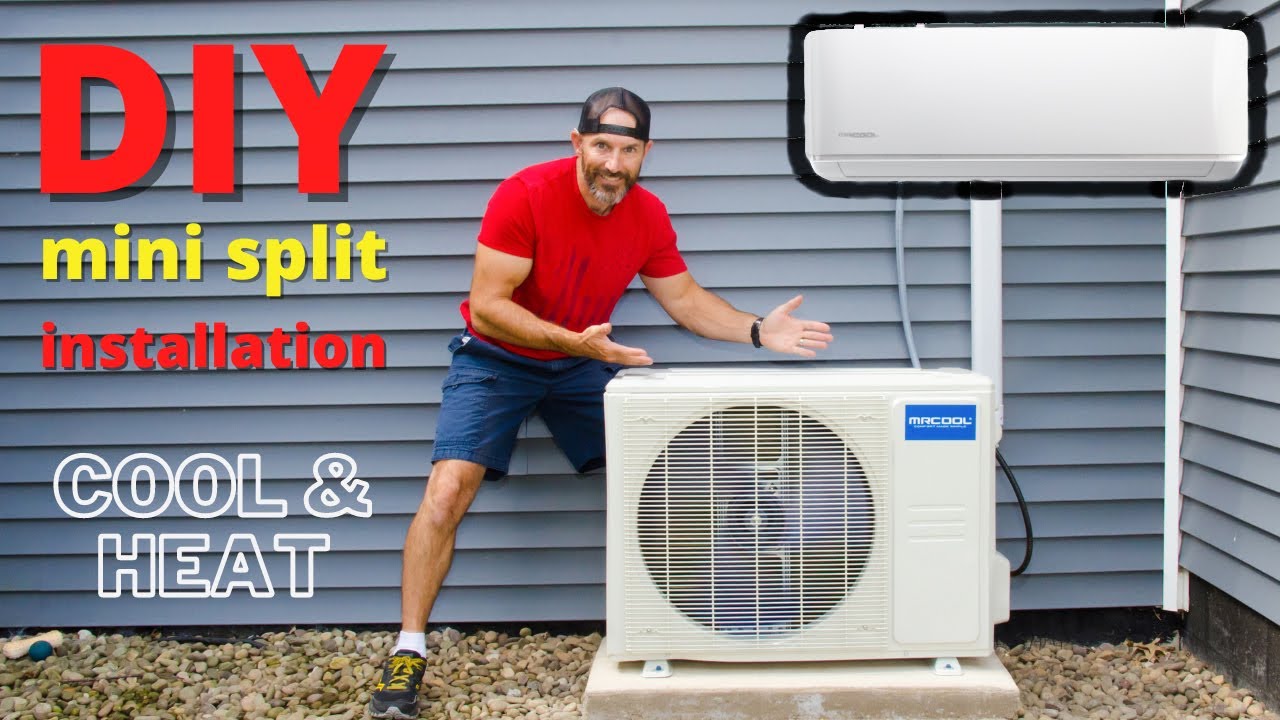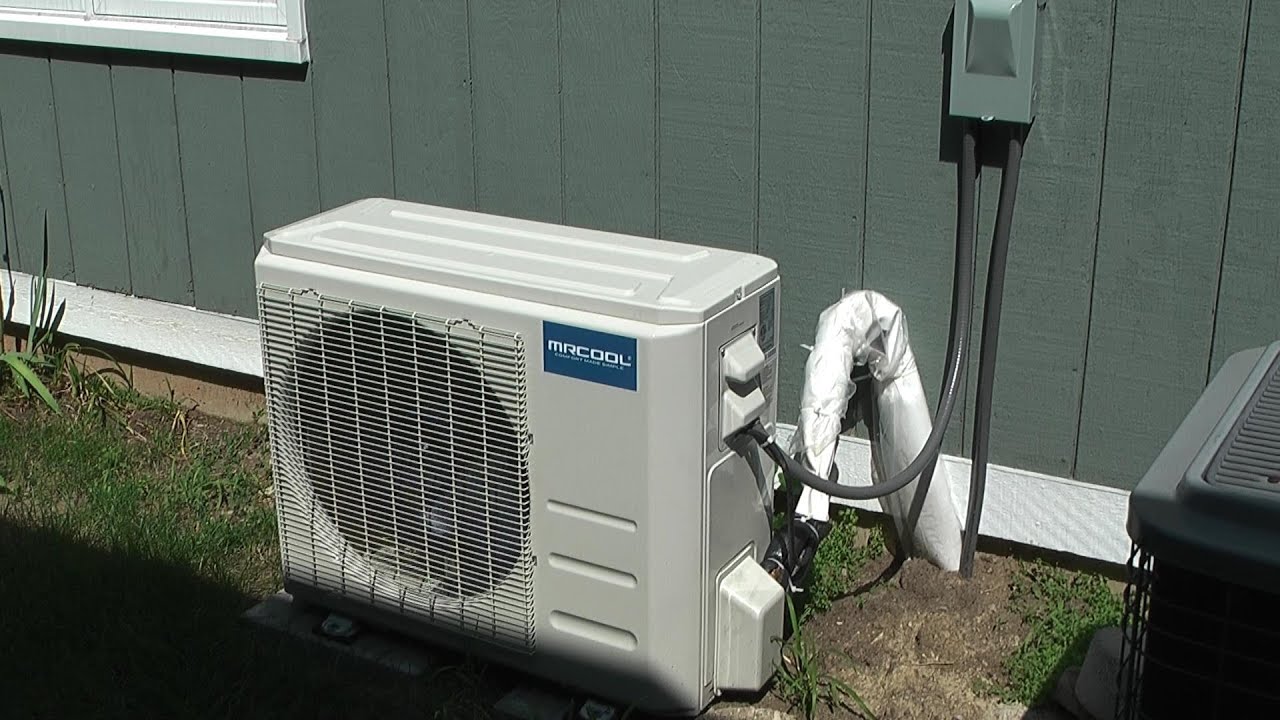Mr cool diy – Mr. Cool DIY offers a refreshing alternative to traditional HVAC systems, empowering homeowners to take control of their cooling needs. With a focus on simplicity and affordability, Mr. Cool DIY systems provide a practical solution for those seeking to beat the heat without breaking the bank. These systems are designed to be user-friendly, making installation and maintenance a breeze, even for those without prior HVAC experience.
The Mr. Cool DIY product line caters to a diverse range of needs, offering various types of systems, from compact mini-splits to powerful ductless units. This variety allows homeowners to choose the perfect system for their specific space and budget, ensuring optimal comfort and energy efficiency.
Installation Process: Mr Cool Diy

Installing a Mr. Cool DIY system is a project that can be tackled by many homeowners with some basic DIY skills. While the process might seem daunting at first, following the manufacturer’s instructions and taking safety precautions can lead to a successful installation. Here’s a breakdown of the process and some tips for a smooth experience.
Understanding the Installation Process
The installation process for a Mr. Cool DIY system typically involves several steps:
- Preparing the Site: This includes selecting the appropriate location for the indoor and outdoor units, ensuring adequate clearance, and verifying electrical requirements.
- Installing the Outdoor Unit: This involves mounting the outdoor unit on a sturdy base, connecting it to the electrical system, and running refrigerant lines to the indoor unit.
- Installing the Indoor Unit: This involves mounting the indoor unit, connecting it to the electrical system, and connecting the refrigerant lines from the outdoor unit.
- Connecting the System: This involves connecting the indoor and outdoor units using refrigerant lines and electrical wiring.
- Testing and Commissioning: This involves testing the system to ensure it is operating correctly and making any necessary adjustments.
Tips and Tricks for DIY Installation
Here are some tips and tricks to ensure a successful DIY installation:
- Read the Manual: Before starting any work, carefully read the manufacturer’s installation instructions. This will provide detailed information on each step and safety precautions.
- Plan Ahead: Take the time to plan the installation carefully, including selecting the location for the units, determining the necessary electrical connections, and gathering all the necessary tools and materials.
- Seek Assistance: If you are unsure about any aspect of the installation, do not hesitate to seek assistance from a qualified HVAC professional.
- Use the Right Tools: Ensure you have all the necessary tools for the installation, such as a level, drill, pipe cutters, and wire strippers.
- Be Careful with Refrigerant Lines: Refrigerant lines are under pressure and should be handled with care. Always follow the manufacturer’s instructions for connecting and disconnecting the lines.
- Check for Leaks: After connecting the refrigerant lines, check for leaks using a leak detector. This will help prevent refrigerant loss and ensure the system operates efficiently.
Safety Precautions, Mr cool diy
Safety is paramount during the installation process. Always follow these precautions:
- Disconnect Power: Always disconnect the power to the electrical system before working on any wiring.
- Use Personal Protective Equipment: Wear safety glasses, gloves, and work boots when handling tools or working with electrical components.
- Be Aware of Falling Objects: When working on the roof or ladder, be aware of falling objects and take appropriate safety precautions.
- Work in a Well-Ventilated Area: When working with refrigerant, ensure the area is well-ventilated to avoid the buildup of harmful gases.
Cost Considerations
When considering a Mr. Cool DIY system, it’s important to weigh the initial cost against the potential long-term savings. While DIY installation can save you money upfront, professional installation may offer peace of mind and potentially avoid costly mistakes.
Initial Costs
The initial cost of a Mr. Cool DIY system includes the purchase price of the unit and any necessary accessories. The cost of the unit will vary depending on the size, features, and SEER rating.
- A typical 1.5-ton Mr. Cool DIY system can range from $1,500 to $2,500.
- Accessories like refrigerant lines, electrical wiring, and thermostats can add another $200 to $500 to the total cost.
DIY vs. Professional Installation
- DIY Installation: This option allows you to save money on labor costs. However, it requires time, effort, and technical expertise. You will need to be comfortable with basic electrical and HVAC knowledge to ensure proper installation and avoid potential safety hazards.
- Professional Installation: While more expensive upfront, professional installation ensures the system is installed correctly, maximizing efficiency and longevity. Professional installers are also familiar with local building codes and can ensure your system meets all safety standards.
Long-Term Cost Savings
Mr. Cool DIY systems are known for their energy efficiency, which can translate into significant long-term cost savings.
- Energy Efficiency: The SEER (Seasonal Energy Efficiency Ratio) rating of a unit measures its energy efficiency. Higher SEER ratings indicate greater efficiency and lower energy consumption.
- Lower Utility Bills: A more efficient system can reduce your monthly energy bills, leading to significant savings over the system’s lifespan. For example, a system with a SEER rating of 18 can reduce your cooling costs by 18% compared to a system with a SEER rating of 13.
“A well-installed Mr. Cool DIY system can provide years of reliable and efficient cooling while saving you money on your energy bills.”
Environmental Impact
Mr. Cool DIY systems, while offering convenience and cost-effectiveness, do have an environmental impact. Understanding this impact is crucial for making informed decisions about your cooling needs and minimizing your footprint.
Energy Efficiency and Sustainability
Mr. Cool DIY systems are generally considered energy-efficient compared to traditional window units. They often use variable-speed compressors, which adjust their output based on the room’s temperature, reducing energy consumption. However, their sustainability depends on several factors:
- Refrigerant Type: Mr. Cool DIY systems typically use R410A refrigerant, which has a high Global Warming Potential (GWP). While R410A is currently widely used, newer systems are transitioning to more environmentally friendly refrigerants like R32, which has a lower GWP.
- Energy Star Rating: Look for systems with an Energy Star rating, indicating they meet specific energy efficiency guidelines.
- Installation and Maintenance: Proper installation and regular maintenance are crucial for maximizing energy efficiency and reducing environmental impact. A well-installed and maintained system operates optimally and minimizes leaks or refrigerant loss.
Tips for Reducing Environmental Footprint
Here are some tips for minimizing the environmental impact of your DIY cooling:
- Choose Energy-Efficient Models: Opt for systems with high SEER ratings (Seasonal Energy Efficiency Ratio) and consider models using R32 refrigerant.
- Proper Sizing: Ensure the system is appropriately sized for your space. Oversized units cycle on and off frequently, wasting energy.
- Smart Thermostats: Consider using a smart thermostat to automate temperature control and optimize energy usage.
- Shade and Ventilation: Maximize natural cooling by using window coverings, planting trees, and ensuring proper ventilation.
- Regular Maintenance: Schedule annual maintenance to ensure optimal performance and prevent refrigerant leaks.
Future Trends in DIY Cooling
The DIY cooling market is constantly evolving, with new technologies and innovations emerging all the time. These advancements are driven by factors like increasing demand for energy efficiency, rising consumer awareness of environmental impact, and the desire for personalized cooling solutions.
Smart and Connected Cooling
Smart and connected cooling systems are becoming increasingly popular. These systems can be controlled remotely using smartphones or voice assistants, allowing users to adjust temperature settings, monitor energy consumption, and even receive alerts about potential issues. For example, the Nest Learning Thermostat, a popular smart home device, can automatically adjust temperature settings based on user preferences and occupancy patterns.
Energy-Efficient Technologies
The focus on energy efficiency is driving innovation in cooling technologies. Manufacturers are developing more efficient compressors, fans, and refrigerants to reduce energy consumption and lower operating costs. For instance, the use of variable-speed compressors, which adjust the speed based on cooling needs, can significantly reduce energy usage compared to traditional fixed-speed compressors.
Eco-Friendly Refrigerants
The environmental impact of refrigerants is a growing concern. The industry is transitioning to more environmentally friendly refrigerants with lower global warming potential (GWP). Refrigerants like R32 and R454B are being increasingly adopted as alternatives to older, high-GWP refrigerants like R410A.
Modular and Customizable Systems
DIY cooling systems are becoming more modular and customizable. This allows users to tailor their systems to their specific needs and space constraints. For example, some manufacturers offer modular components like indoor and outdoor units that can be combined to create a system that fits the desired cooling capacity.
Increased Integration with Renewable Energy
The integration of DIY cooling systems with renewable energy sources, such as solar panels, is gaining traction. This allows users to power their cooling systems using clean energy, further reducing their environmental impact and energy costs. For example, homeowners can install solar panels to offset the energy consumption of their air conditioners, reducing their reliance on the grid and lowering their electricity bills.
Final Wrap-Up

As you embark on your DIY cooling journey, Mr. Cool DIY presents an appealing blend of affordability, efficiency, and control. With careful planning, proper installation, and regular maintenance, you can enjoy a comfortable and cost-effective cooling solution that meets your individual needs. Whether you’re seeking a simple upgrade for a single room or a comprehensive system for your entire home, Mr. Cool DIY provides a practical and empowering option for staying cool in style.